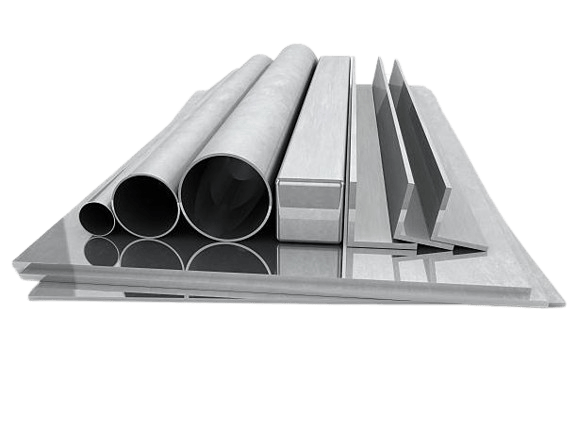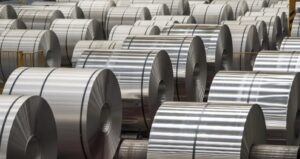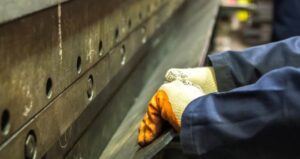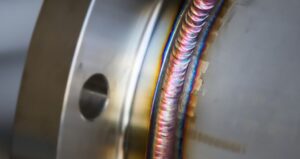In the realm of modern manufacturing, CNC aluminum extrusion stands as a beacon of precision and efficiency, revolutionizing the production of diverse products across industries. This advanced technique merges the versatility of aluminum with the precision of Computer Numerical Control (CNC), creating a seamless marriage of form and function in the manufacturing world.
Definition of Aluminum Extrusion Process

Aluminum extrusion (or aluminum extrusion molding) is a plastic processing method for obtaining parts or semi-finished products with the required cross-sectional shape, size, and certain mechanical properties by applying strong pressure to the aluminum billet placed in the die cavity (or extrusion cylinder), forcing the aluminum billet to undergo directional plastic deformation and extruding it from the die orifice.
Characteristics of Aluminum Extrusion Process
During the extrusion process, the deformed metal can obtain a more intense and uniform compressive stress state in the deformation zone than rolling and forging, which can fully utilize the plasticity of the processed metal.
Extrusion forming can produce not only simple bar, tube, profile, and wire products but also complex sectional profiles and pipes.
Extrusion forming has great flexibility. By simply changing dies and other extrusion tools, products with different shapes, specifications, and varieties can be produced on one piece of equipment. The operation of changing extrusion dies is simple, quick, and time-saving.
Extruded products have high precision, good surface quality, and improved utilization and yield of metal materials.
The extrusion process has a good influence on the mechanical properties of metals.
The process has a short production cycle, is convenient to produce, and can obtain large overall structural parts in one extrusion, with low equipment investment, low mold costs, and high economic benefits.
What Is CNC Aluminum Extrusion?
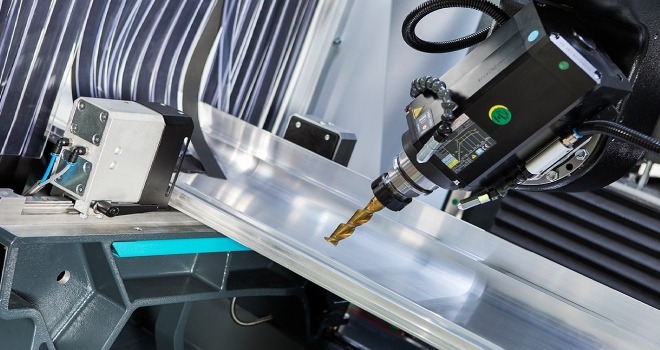
CNC aluminum extrusion is a manufacturing process that involves shaping aluminum alloys into specific profiles using Computer Numerical Control (CNC) technology. This process combines the versatility of aluminum with the precision of CNC aluminum machining to create intricate and precise aluminum profiles. By applying pressure to aluminum material and forcing it through a die under the control of CNC systems, manufacturers can produce components with consistent quality, intricate designs, and high precision. CNC aluminum extrusion is known for its efficiency, versatility, and the ability to create complex shapes that are difficult to achieve using traditional methods.
CNC Aluminum Extrusion Process
In the CNC aluminum extrusion process, the following detailed steps are typically followed:
Design: The initial step in CNC aluminum extrusion is the creation of a design using computer-assisted design (CAD) software. This allows for precise dimensions and specifications to be defined for the aluminum extrusion.
Programming: After the design phase, the next step is to program the design into the CNC machine. The CNC machine uses this program to guide a series of tools that cut, shape, and form the aluminum extrusion into the desired shape based on the design specifications.
Machining: Once the CNC machine has processed the aluminum extrusion according to the programmed design, the machined part undergoes finishing processes. This typically involves sanding, polishing, or anodizing to achieve the desired surface finish and properties.
CNC Aluminum Extrusion Considerations
When working with CNC aluminum extrusions, several key considerations can help ensure successful machining and prevent part deformation:
Clamping Force Control:
- Control the clamping force to prevent part deformation during the machining process. Proper clamping ensures that the workpiece remains stable and secure.
Cutting Tool Optimization:
- Optimize cutting tools for aluminum profiles by providing ample chip space. This helps maintain normal tool operation by allowing chips to evacuate easily.
- Use tools with fewer teeth to reduce the potential for cutting deformation in highly plastic aluminum.
Cutting Speed Control:
- Control the cutting speed during aluminum profile CNC machining. While aluminum is softer than steel, excessive cutting speed can lead to issues such as tool wear, poor surface finish, and even part deformation.
- Adjust the cutting speed to a level that balances productivity with quality, ensuring that the machining process is efficient without compromising the integrity of the part.
What Aluminum Products Need CNC Manching?

CNC aluminum machining is a versatile manufacturing process that finds applications in producing a wide range of aluminum products across various industries. Some common aluminum products that often benefit from CNC machining include:
Automotive Parts
Aluminum components in the automotive industry, including engine parts, transmission components, suspension elements, and custom parts, often undergo CNC aluminum machining for precise shaping and detailing.
Electronic Enclosures
Enclosures for electronic devices like computers, servers, and consumer electronics often require CNC machining for creating precise cutouts, holes, and intricate designs to accommodate electronic components.
Industrial Equipment
Various industrial equipment and machinery components, such as frames, mounts, brackets, and specialized parts, benefit from CNC machining for precise manufacturing and customization.
Architectural Elements
Aluminum architectural components, including balustrades, facades, decorative panels, and structural elements, often undergo CNC aluminum machining for intricate designs and precise manufacturing.

